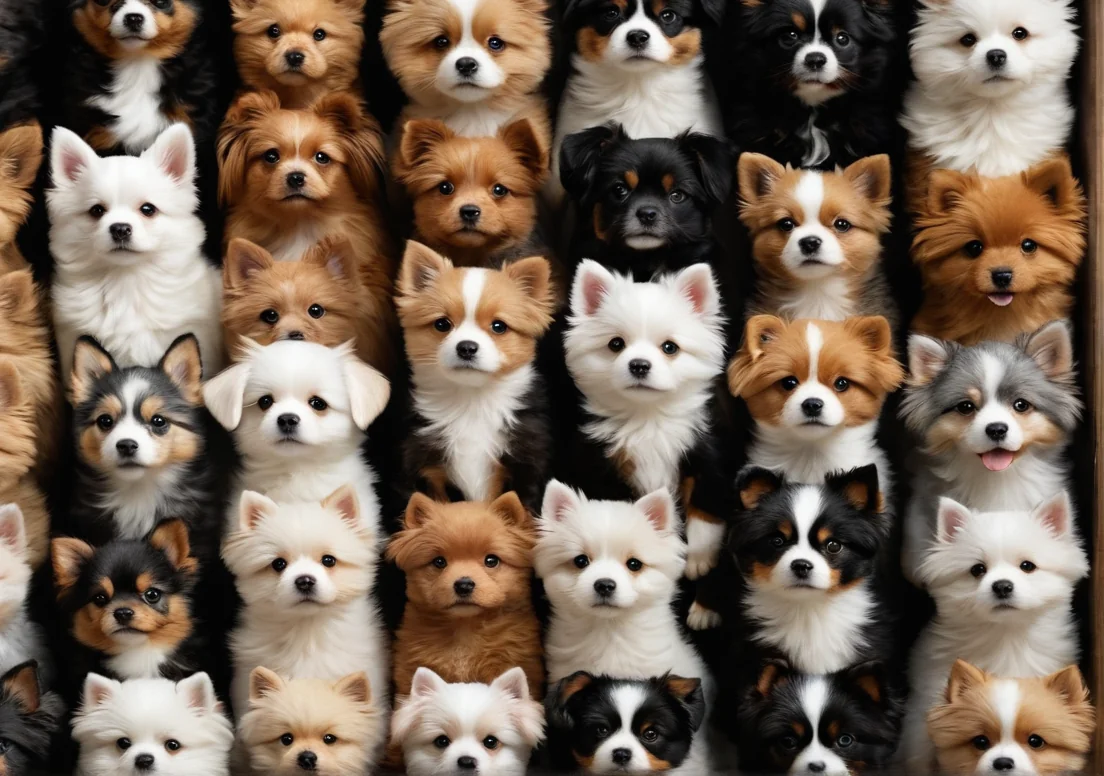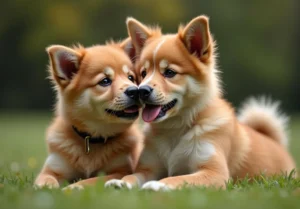Toy dog breeds may be small in size, but their training needs are anything but trivial. It’s essential to address their unique behavior, energy levels, and temperaments to ensure a happy and well-adjusted companion.
Training toy dog breeds requires specialized techniques tailored to their specific needs. Understanding their temperament, setting clear boundaries, and using positive reinforcement are key to effective training. But there’s a treasure trove of insights and techniques to uncover that will transform your tiny pup into a well-mannered canine companion. Let’s explore!

Recognizing Toy Dog Temperament
Understanding the temperament of toy dog breeds is essential for effective training. These little pups, often characterized by their big personalities, manifest unique traits that significantly impact how they respond to commands and training methods.
Toy breeds typically possess a curious, lively nature. Their playfulness can translate into short attention spans, making it crucial to keep training sessions engaging and brief. Instead of long drills, focus on quick bursts of training combined with lots of positive reinforcement. Many toy breeds thrive on affection and praise, so using treats and verbal encouragement can increase their motivation to learn.
Another vital aspect is the trust factor. Toy dogs often bond closely with their owners. Nurturing this bond through gentle handling and consistent interaction ensures that your toy breed is more receptive during training. Recognizing that these dogs may also exhibit a hint of stubbornness is helpful. They might choose to ignore commands if they don’t see the point. Keeping training fun and rewarding is key to overcoming this behavior.
Understanding these distinct personality traits will not only make training smoother but also help strengthen the relationship between you and your toy dog.
Why Consistency Matters
If there’s one thing that can make or break your training routine, it’s consistency. Toy dog breeds often respond best to steady communication and predictable commands. With these little dynamo pups, using the same phrases and hand signals for commands creates a clear understanding of what you expect, reducing confusion and frustration on both sides.
Incorporate consistent training sessions into your daily routine. Aim for several short sessions rather than sporadic long ones; 5-10 minutes a few times a day works wonders. If you regularly use commands like “sit” or “stay,” stick with it! Inconsistency can lead to mixed signals, making it tough for them to grasp what you want.
And don’t forget about consistency in behavior. If you allow them to jump up on the couch sometimes but not others, it blurs the lines. Setting clear rules and sticking to them lays a solid foundation for successful training.
Remember, effective training yields better results when both you and your toy pup are on the same page.
What Role Does Socialization Play?
Socialization is critical for toy dog breeds. These small dogs often have heightened reactions due to their size, which can foster fear or aggression if not properly managed. Early and consistent socialization helps them acclimate to new experiences, people, and environments.
Take your puppy out and expose them to various sights, sounds, and smells. This could be as simple as a trip to the park or a visit to a pet-friendly store. The more variety they encounter, the more confident they become. When introducing them to new situations, use encouragement and calm energy to catch their interest rather than fear.
In terms of behavior, well-socialized toy dogs are typically more balanced and less prone to issues like barking, shyness, or aggression. They become more adaptable and easier to train as they develop a secure understanding of their world. Socialization creates chances for positive interactions, helping your little companion grow into a well-adjusted and confident dog.
How to Use Positive Reinforcement?
Positive reinforcement can work wonders for training toy dogs. Since these breeds can sometimes be headstrong or stubborn, using rewards that resonate with them is essential. Here are some techniques tailored to their needs:
Treats: Use high-value treats like small pieces of chicken or cheese. The goal is to find something that excites them but is still healthy in moderation.
Praise: Your enthusiastic voice can make all the difference. Use a happy tone and shower them with affection when they get it right.
Play: Incorporate their favorite toys or games into training sessions. If they love chasing a ball, use that as a reward after they follow a command correctly.
Short Sessions: Toy breeds often have short attention spans, so keeping training moments to about 5-10 minutes will help maintain their interest. Multiple short sessions can be effective.
Consistency is Key: Make sure everyone in your household uses the same commands and rewards. This uniformity helps prevent confusion.
Engaging positively can foster a strong bond between you and your toy dog, creating an atmosphere of trust that makes training smoother and more enjoyable.
What Are Common Training Challenges?
Training toy dog breeds comes with its unique set of challenges. Small size can lead to big attitudes; these pups often think they rule the roost, which can make them stubborn or sassy. Their eagerness to please might waver if they perceive that they’re not being taken seriously.
Another hurdle is their short attention span. Toy breeds can easily get distracted, making it hard to teach new commands or tricks. Using short, engaging training sessions of about 5-10 minutes can keep their focus sharp while ensuring they don’t burn out.
Socialization issues are also common. These dogs may feel overwhelmed by larger breeds or unfamiliar environments if not properly introduced early on. Regular visits to different settings and controlled interactions with other pets can help them build confidence.
Here are specific strategies to tackle these challenges:
– Be Consistent: Use the same commands and cues every time to avoid confusion.
– Use Positive Reinforcement: Treats, praises, and play are effective motivators to encourage good behavior.
– Break Tasks Down: Instead of overwhelming them with complex commands, focus on one small task at a time.
– Gradually Increase Exposure: Introduce them to new experiences slowly to prevent anxiety.
Additional Insight
A unique angle to consider is the mismatch in expectations when training toy breeds. People often assume they need less training because of their size. However, these dogs require just as much discipline and structure as larger breeds. Owners should remember that ignoring bad behavior, thinking it’s “just a little dog,” can lead to issues later on. Consistency in training is key and should start early.
How Do Exercise Needs Affect Training?
Toy breeds may be small, but they still need a good dose of exercise. Their energy levels significantly influence training effectiveness. A well-exercised toy dog is likelier to be calm and focused in training sessions. Without enough physical activity, these little guys can become hyperactive or even bored, leading to bad behaviors like excessive barking or destructive chewing.
Short walks, fun games of fetch, or even agility exercises tailored to their size can fulfill their exercise needs. Aim for at least 30 minutes a day of active time, which can include both walks and play.
Also, consider their propensity for short bursts of energy—this means frequent, short training sessions paired with physical activity can work wonders. After a vigorous play session, your pup might be more receptive to learning and less likely to get distracted.
Remember that mental stimulation is just as crucial. Puzzle toys and interactive games can help channel their energy into something constructive and aid training progress. Balancing physical exercise with mental challenges may just turn your little companion into a training superstar.
What Training Techniques Are Most Effective?
Understanding the unique characteristics of toy breeds is crucial for effective training. Their small size doesn’t mean they don’t require just as much training as larger dogs. Positive reinforcement is your best bet. This includes techniques like clicker training, where you reward desired behaviors with treats or praise immediately after the action. This helps them connect the dots, reinforcing good habits.
Leash training is often overlooked for these tiny furballs, but it’s essential. A lightweight leash and collar or harness designed for their size can make all the difference. Start by letting them explore on a leash in a controlled environment, gradually introducing distractions. Patience is key as toy breeds can be more prone to distractions due to their curious nature.
Also, keeping training sessions short and engaging—approximately 5 to 10 minutes—is invaluable, given their shorter attention spans. Incorporating fun games and tricks can maintain their interest and enthusiasm. For instance, teaching them to fetch or do a trick like “spin” reinforces basic commands while keeping the sessions enjoyable.
Fun Trivia and Facts
Toy breeds have some charming quirks that make training them even more intriguing. Did you know that Chihuahuas are often referred to as the “King of the Toy Breeds”? Despite their stature, they carry an attitude that can surprise many!
Here’s a fun fact: Yorkshire Terriers were bred to catch rats in clothing mills! This instinct can sometimes manifest in playful but feisty behavior, so using firm, consistent commands during training is key.
Pomeranians are little balls of energy, and their exuberance can lead to overexcitement when training. Incorporating short bursts of play can help channel that energy positively.
Another interesting tidbit: many toy breeds can be prone to small dog syndrome, which can lead to behavioral issues if not addressed early on. Early socialization and training help set the stage for a well-adjusted adult dog.
Incorporating fun facts like these during training can also keep your toy breed engaged and alert during sessions!
Tailoring Training to Your Toy Dog
Toy dogs come with unique characteristics that can influence their training experience. These breeds often exhibit cleverness and an eagerness to please, but they can also have a stubborn streak. Understanding your dog’s personality traits can significantly enhance how you approach training.
Start with short training sessions. Toy breeds have limited attention spans, so aim for 5 to 10-minute sessions. This keeps them engaged and makes learning enjoyable. Incorporating plenty of positive reinforcement—like treats or praise—will motivate them and build a solid bond between you two.
Consider your dog’s individual quirks. Does your Chihuahua shy away from new environments? Gradually introduce them to different settings while keeping a safe distance from overwhelming stimuli. This method, called desensitization, can help them learn to trust you and feel secure.
Socialization is key . Smaller breeds can become a bit bossy or timid if not exposed to various people, pets, and environments. Organize playdates or attend puppy classes to develop their confidence and social skills.
Finally, find ways to incorporate play into training. Whether it’s weaving through cones or playing fetch, using fun activities helps reinforce commands while letting your dog enjoy the process. A happy dog is a willing learner, after all!
Alex, a passionate animal lover, has experience in training and understanding animal behavior. As a proud pet parent to two dogs and three cats, he founded AnimalReport.net to share insights from animal experts and expand his knowledge of the animal kingdom.




